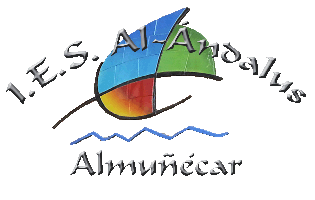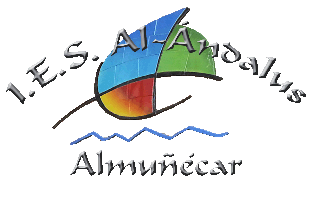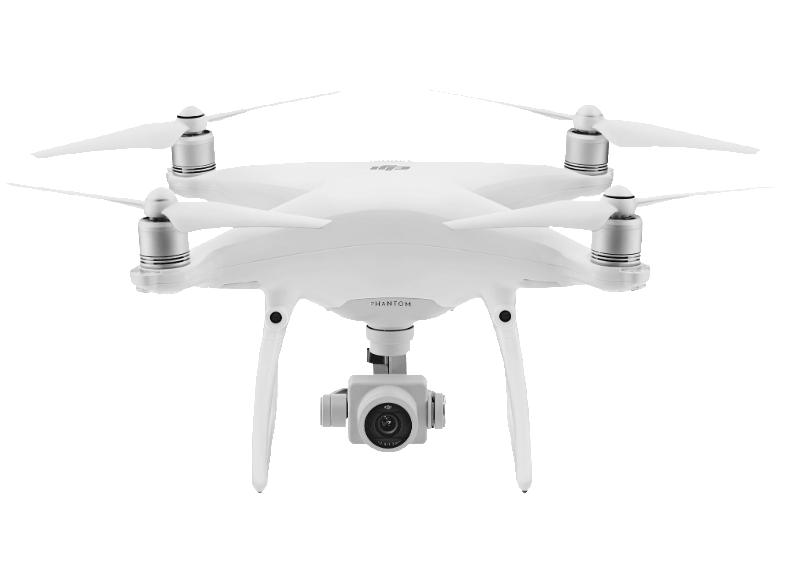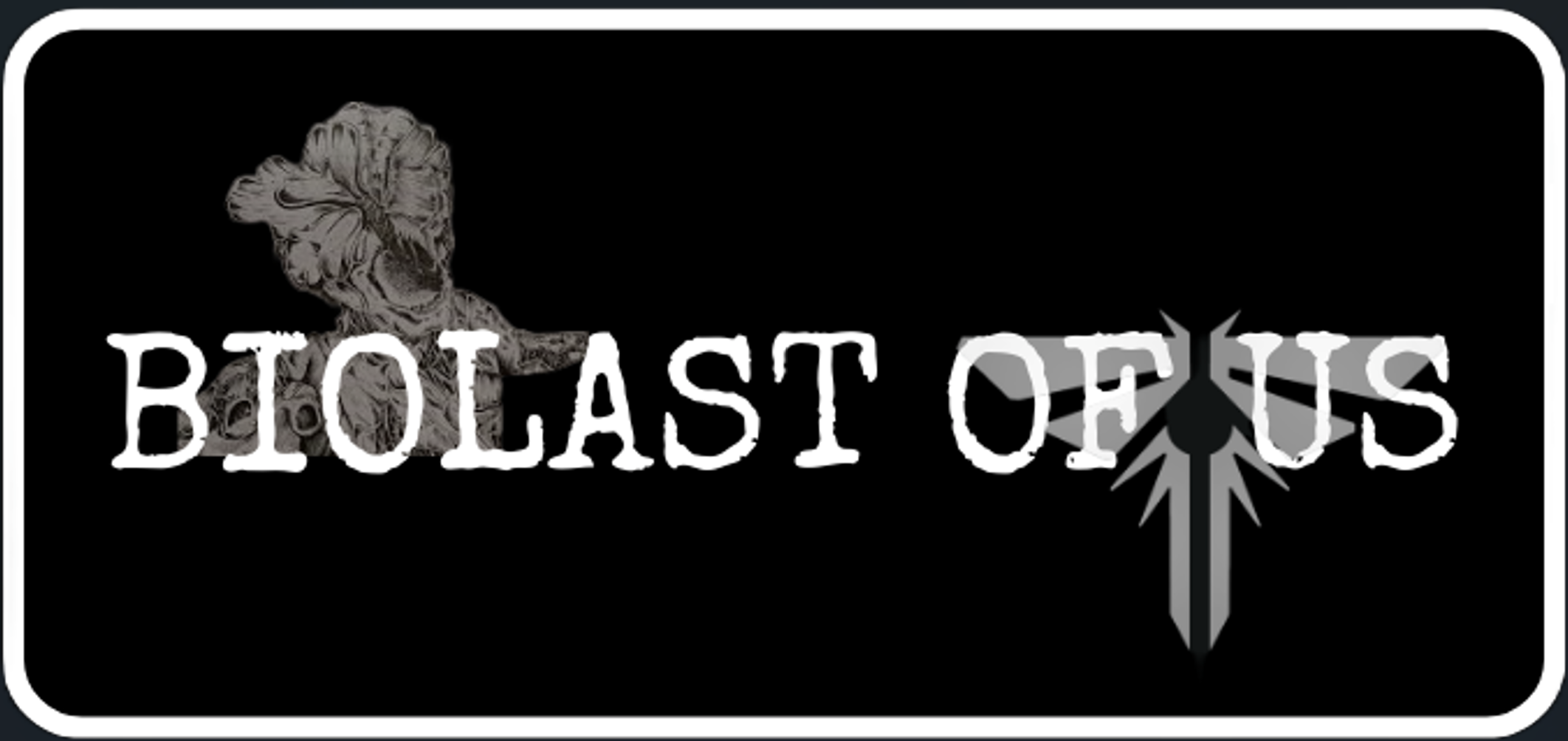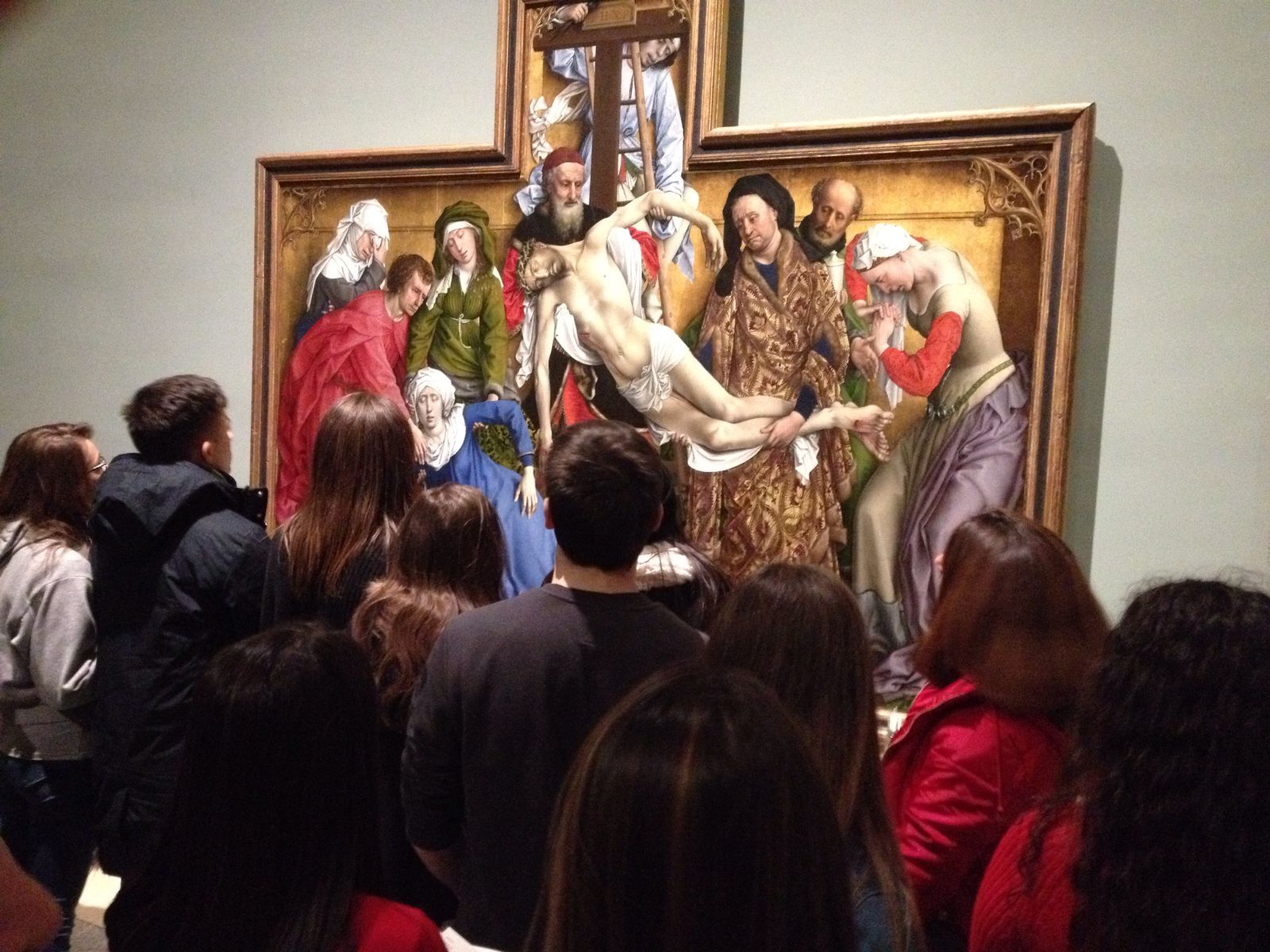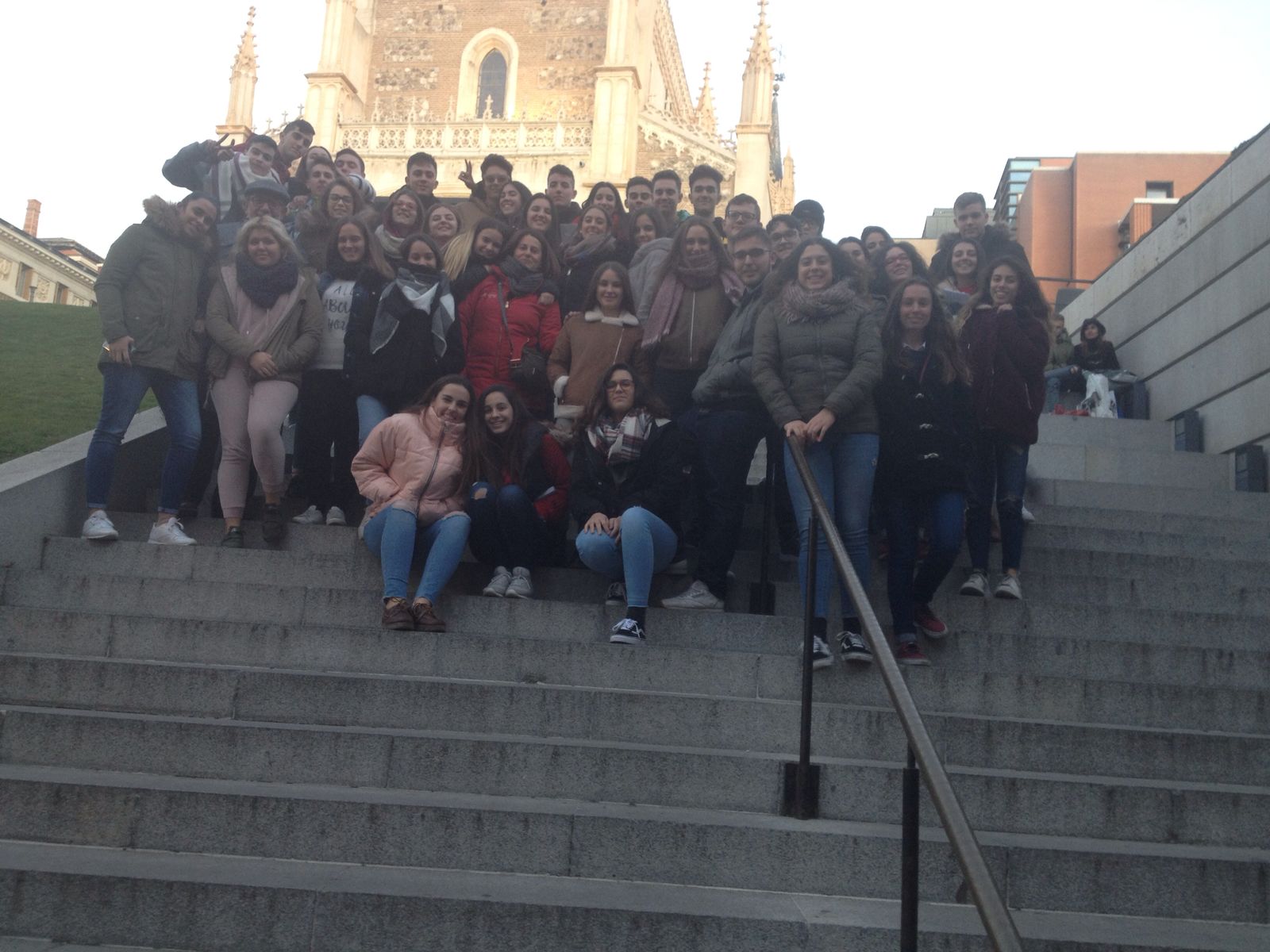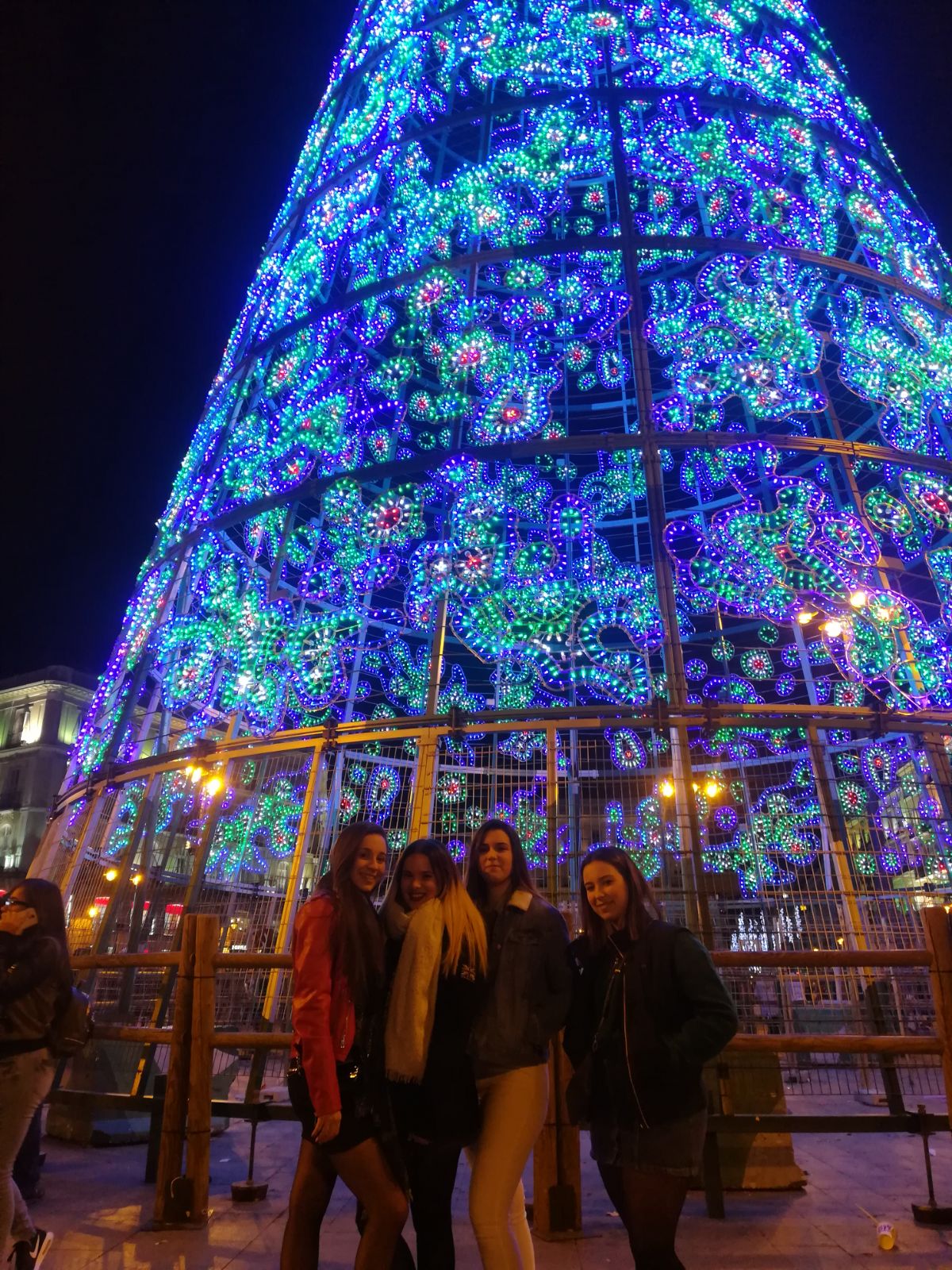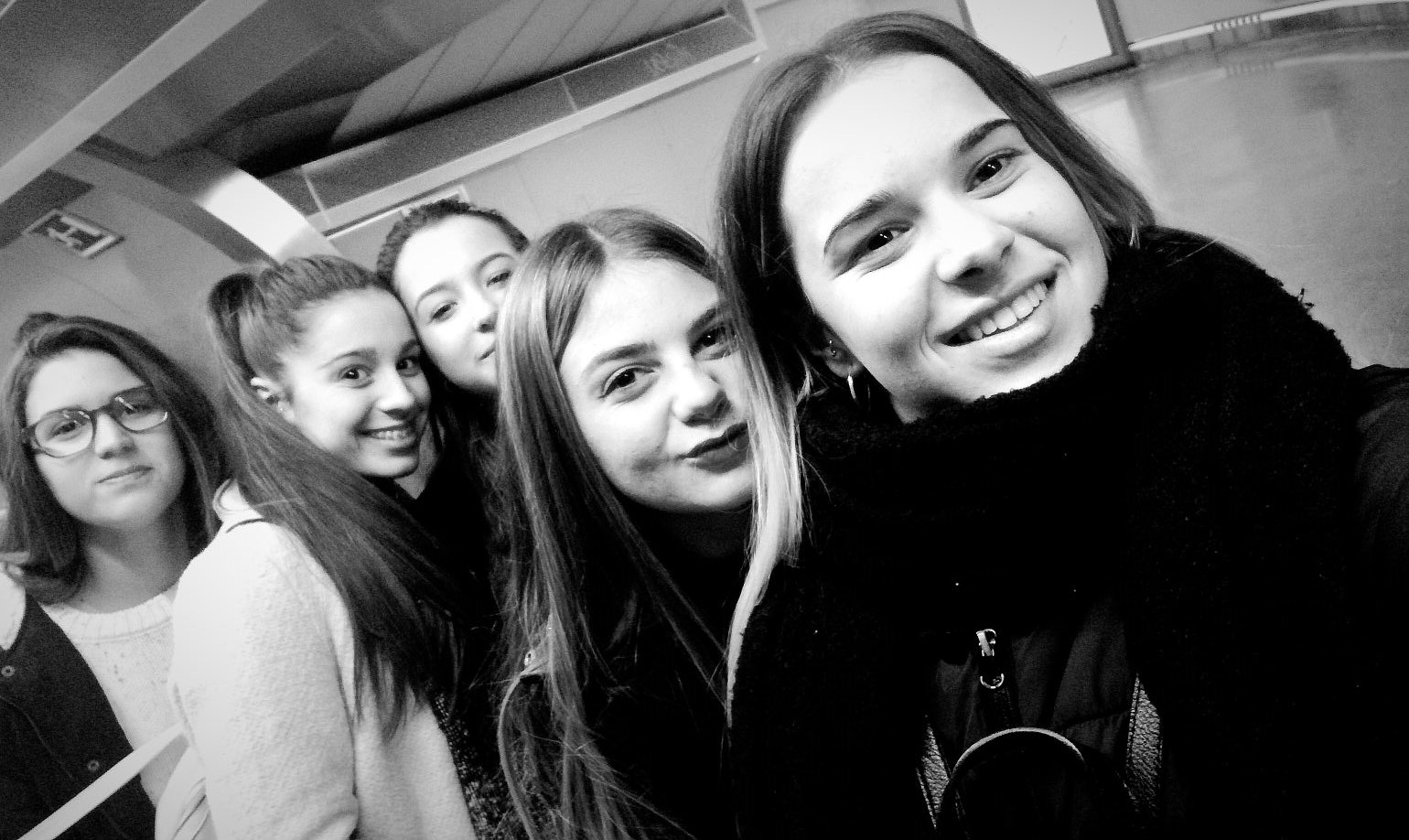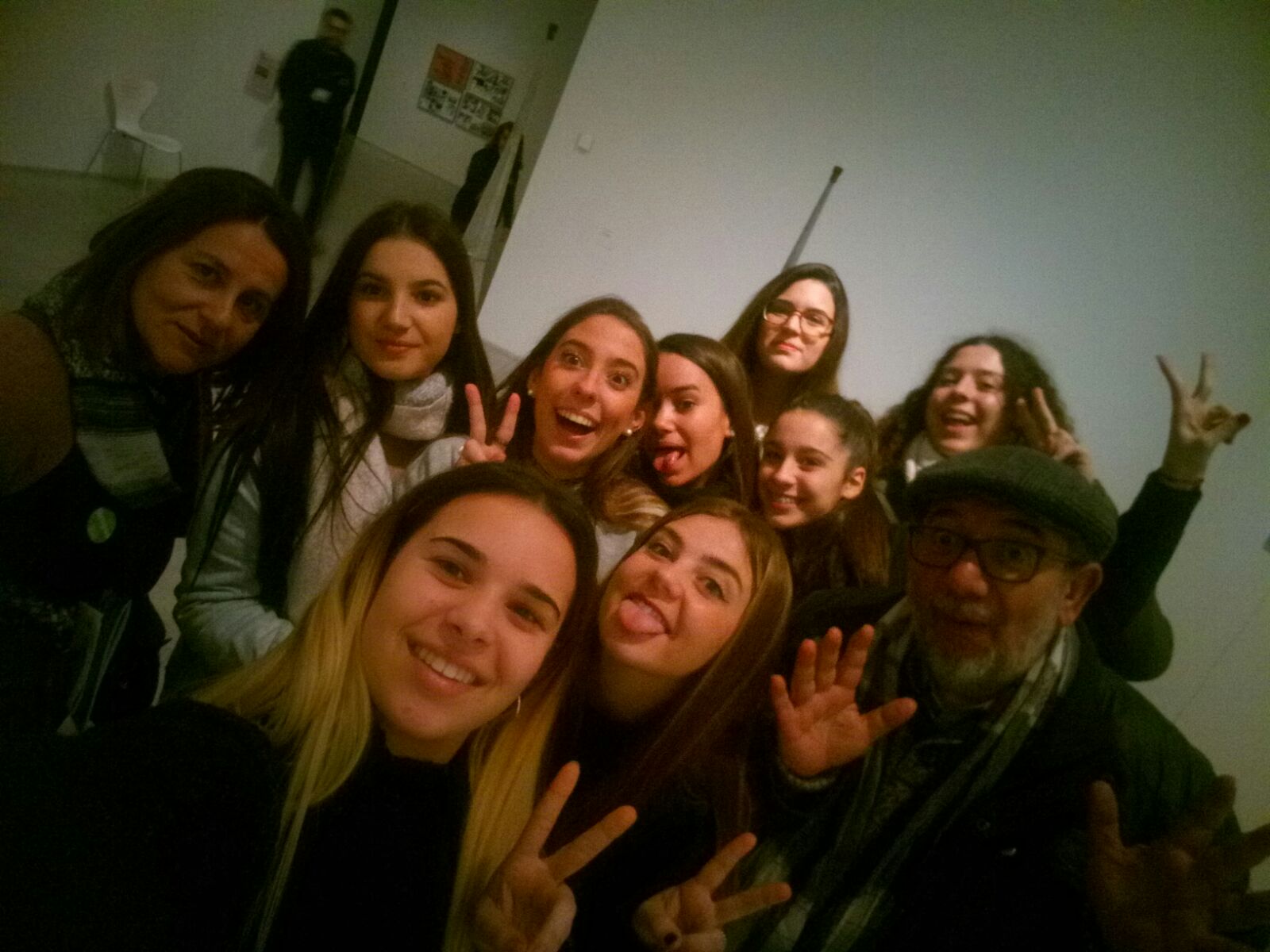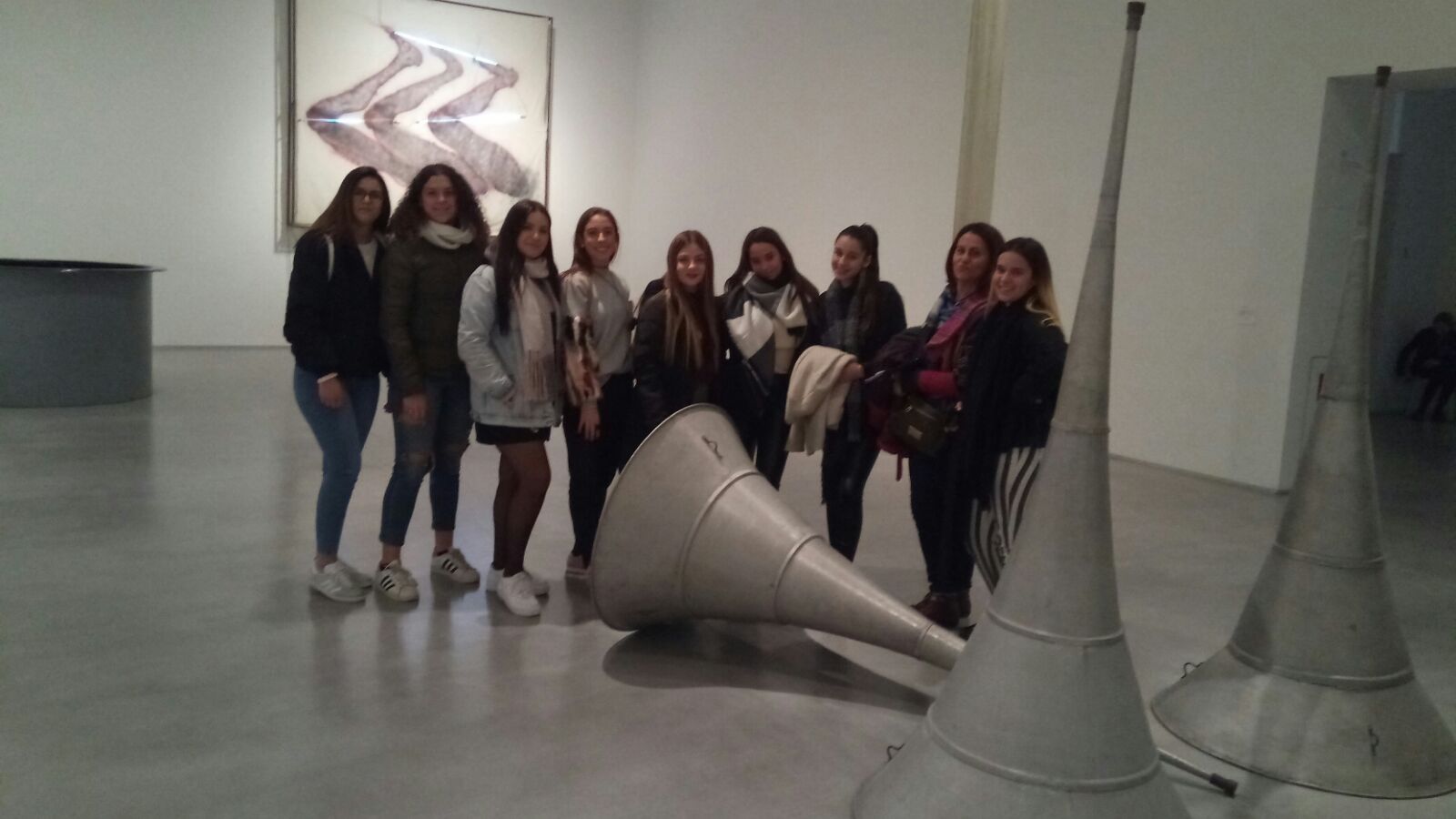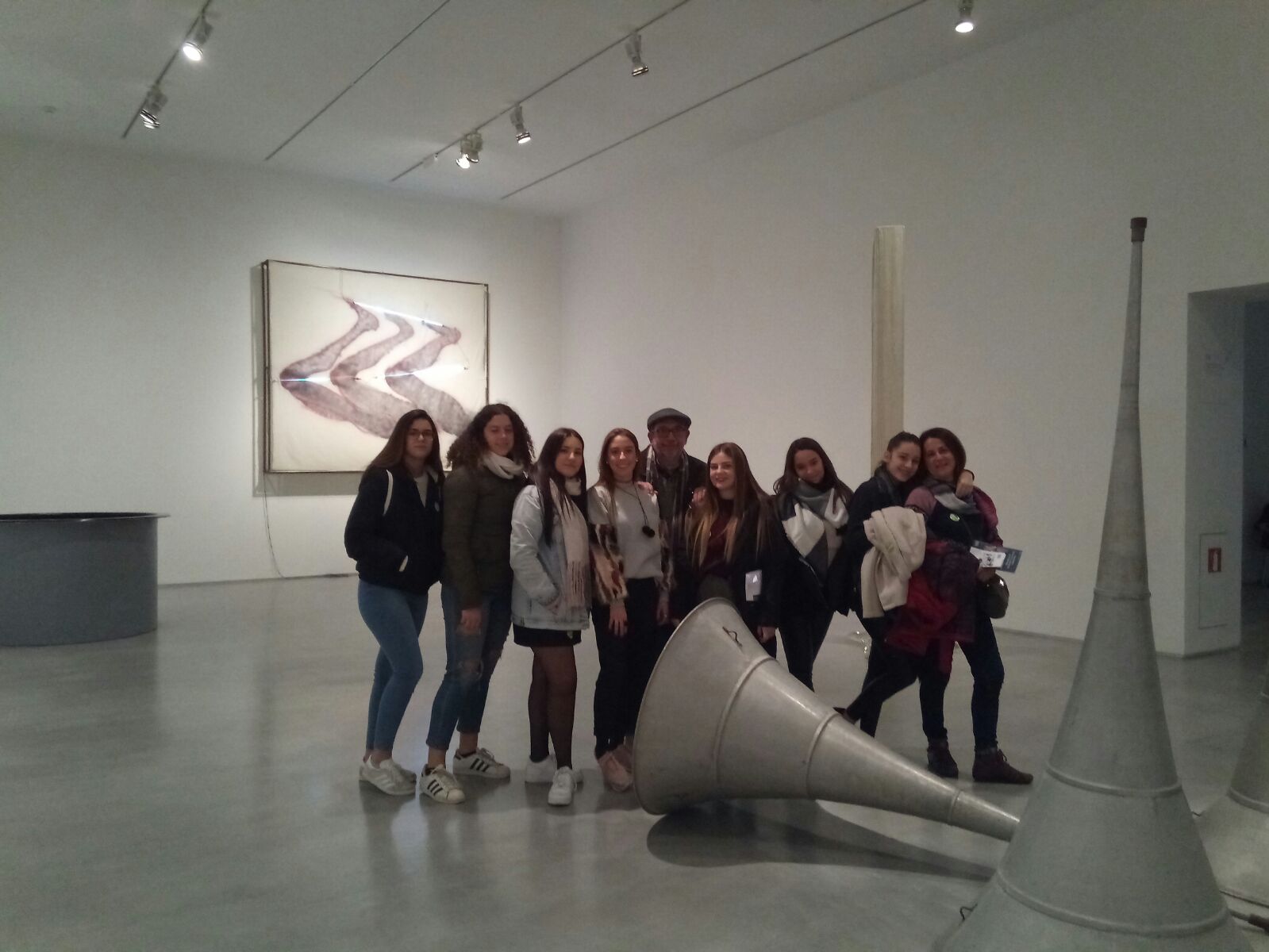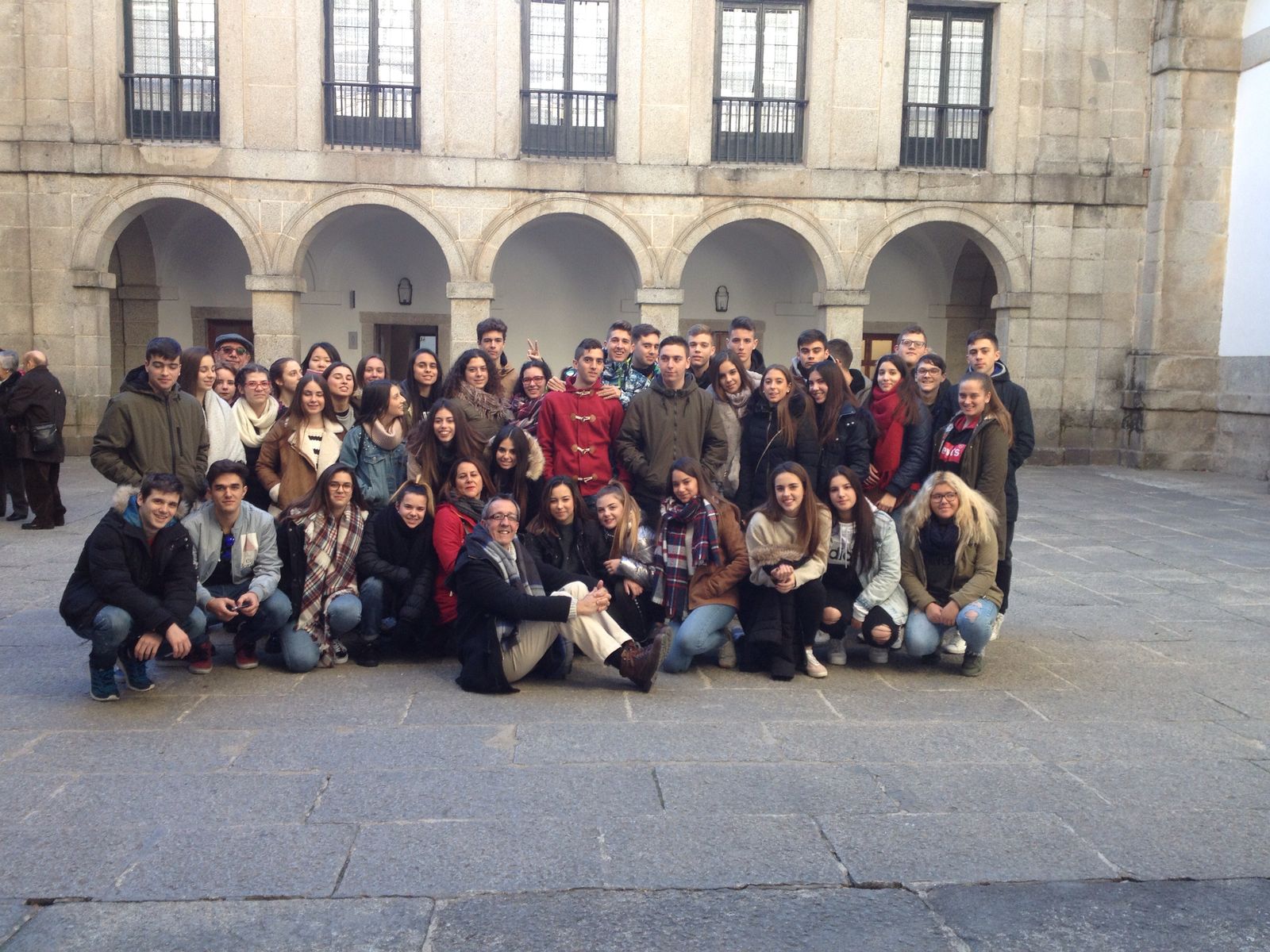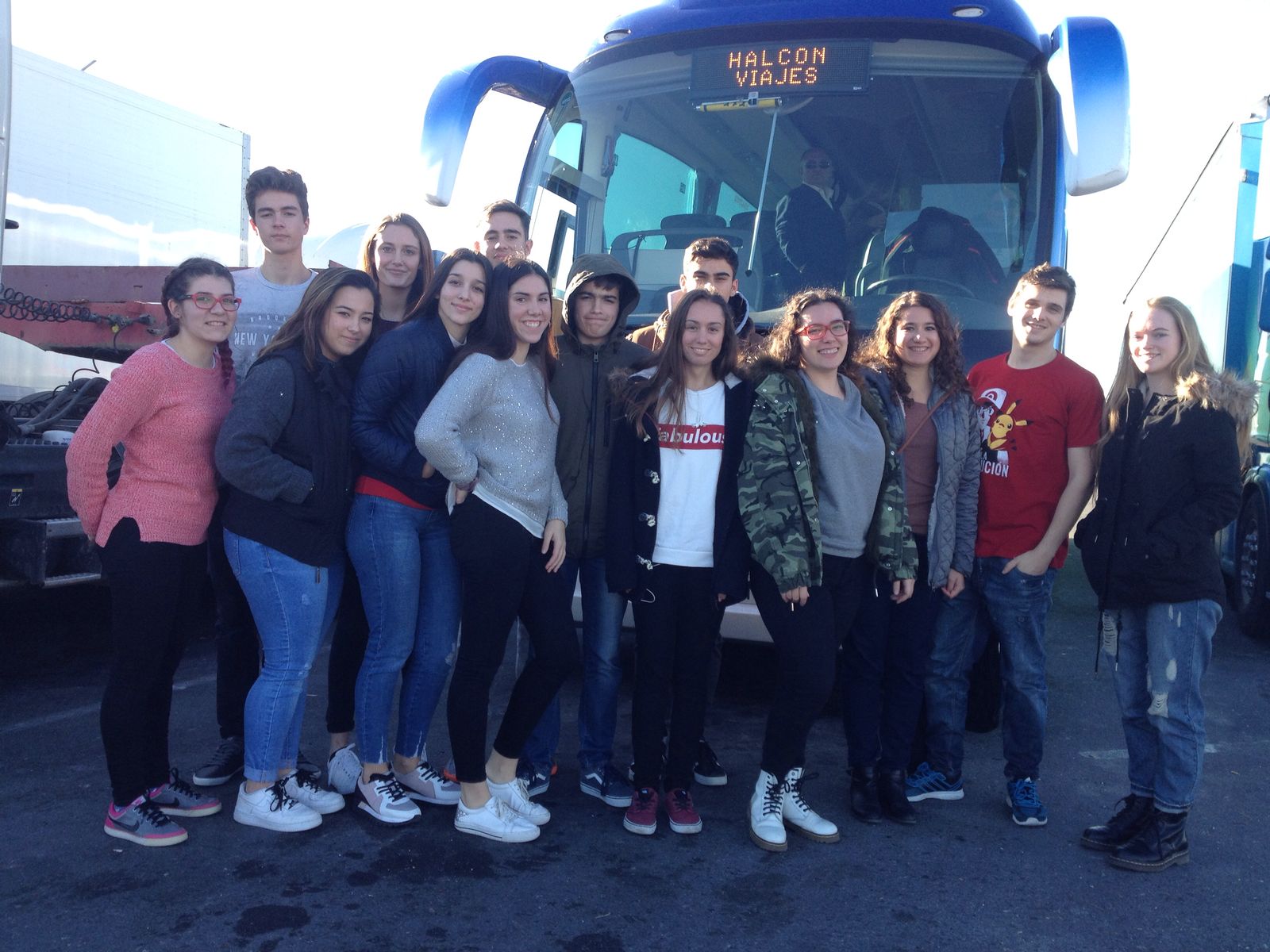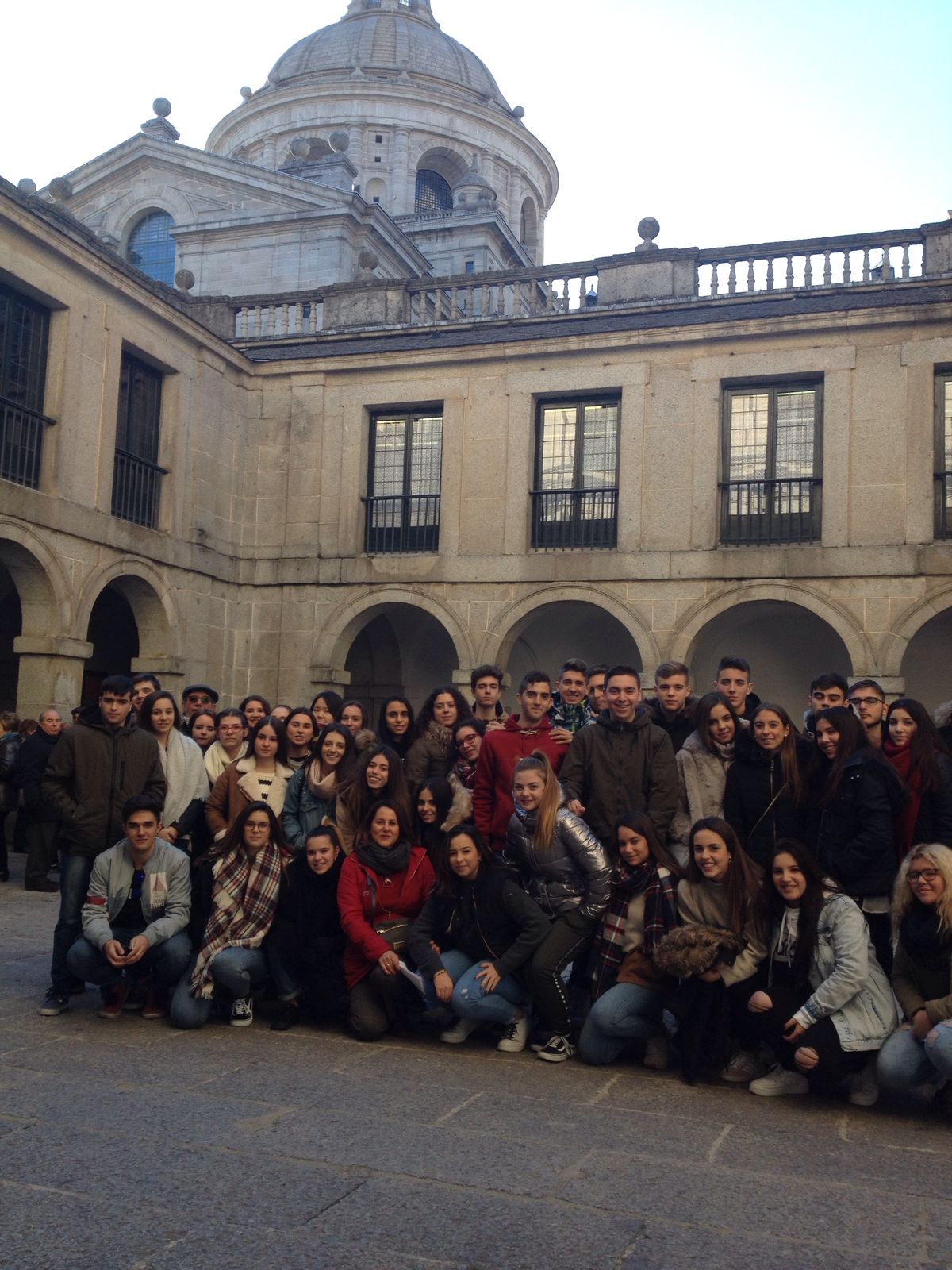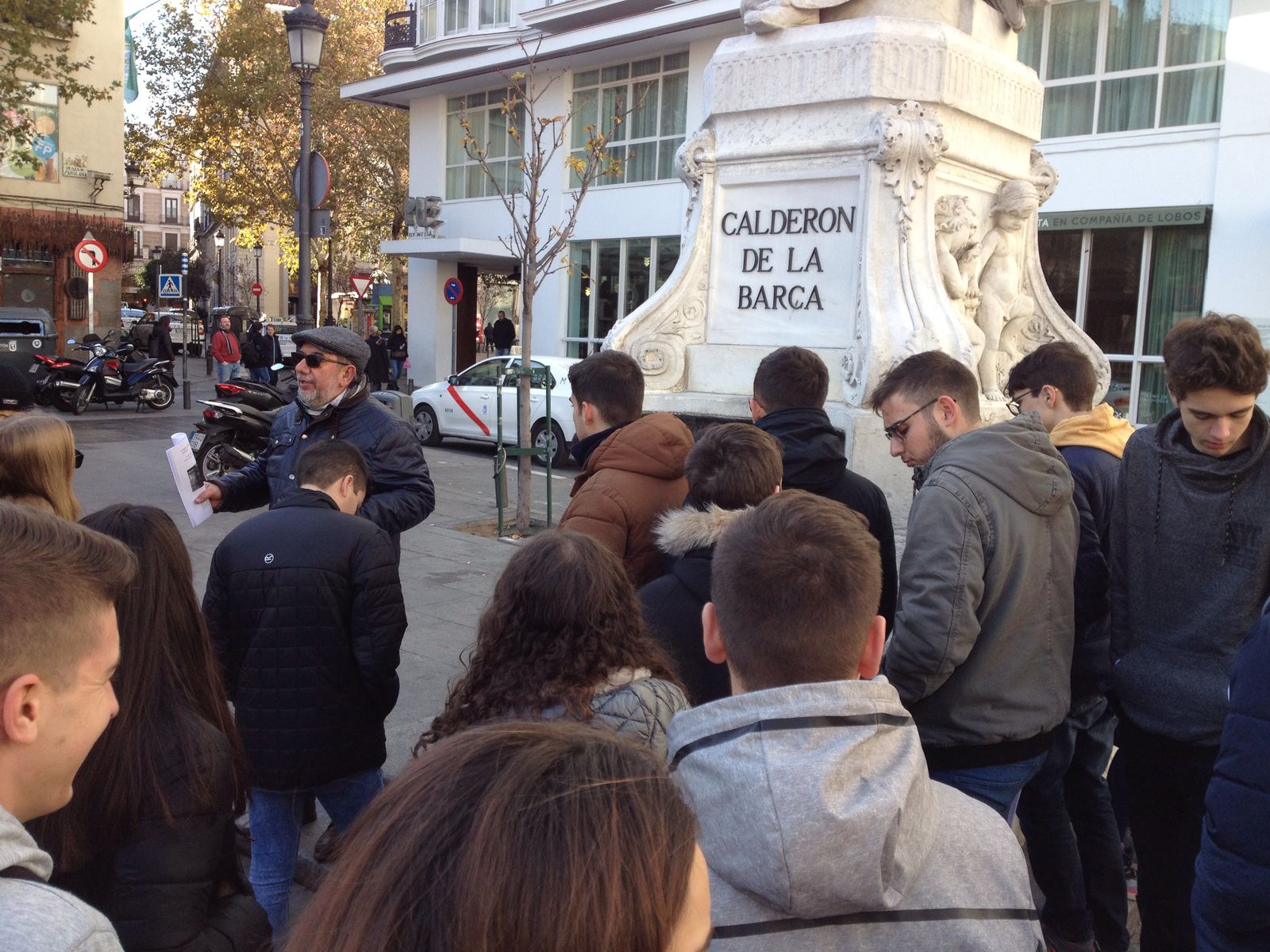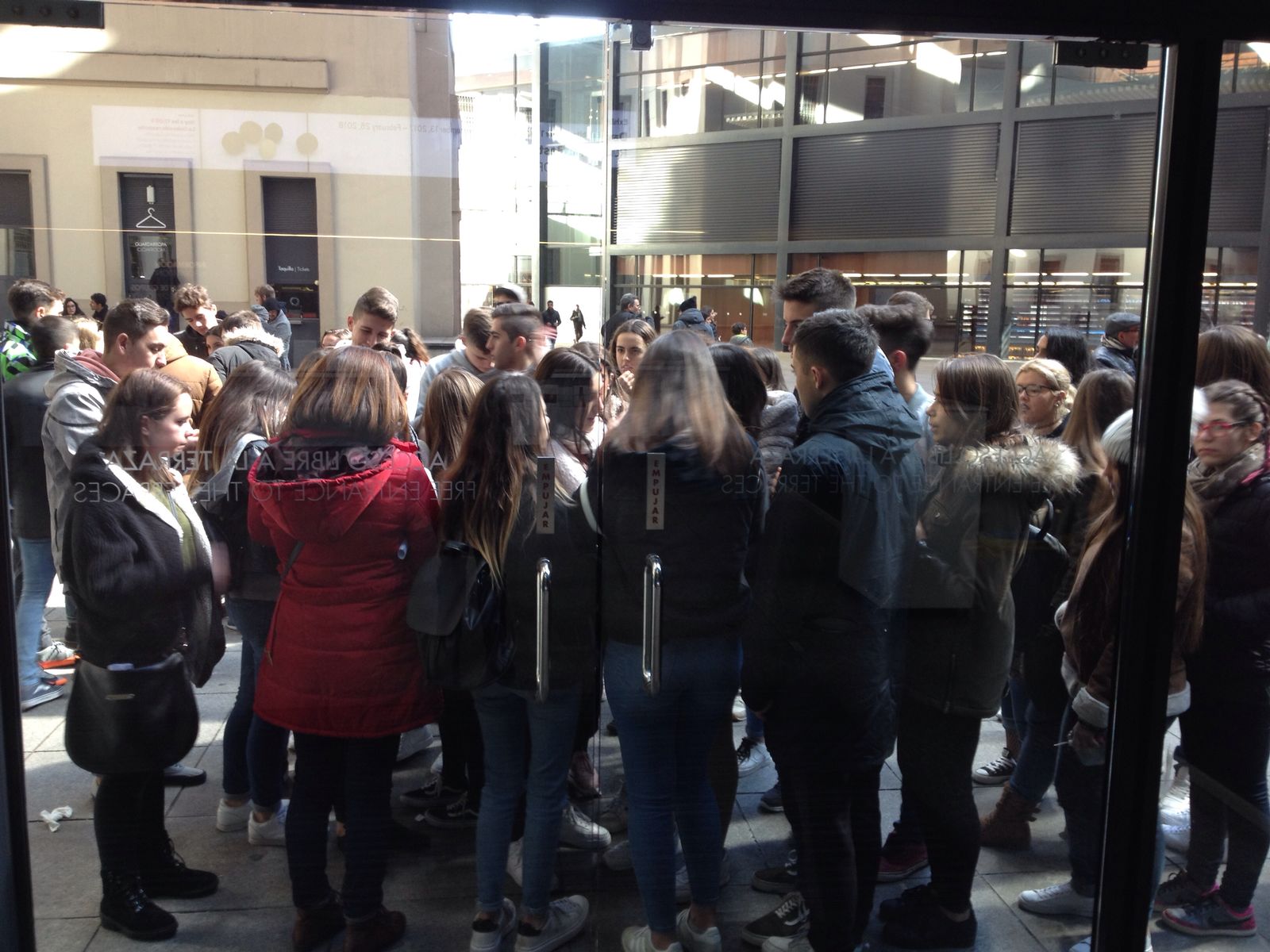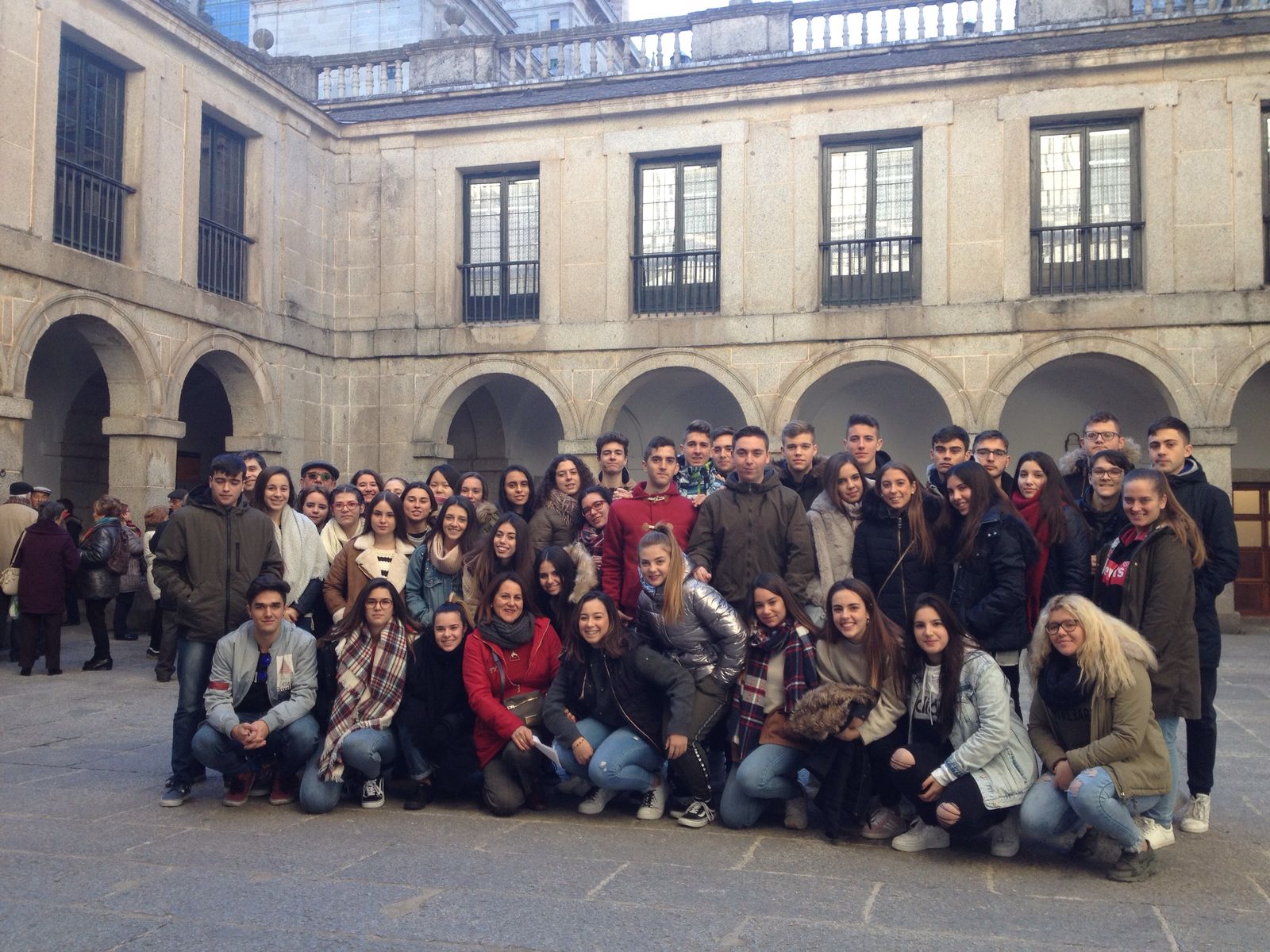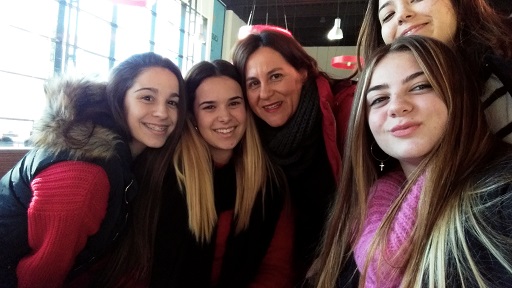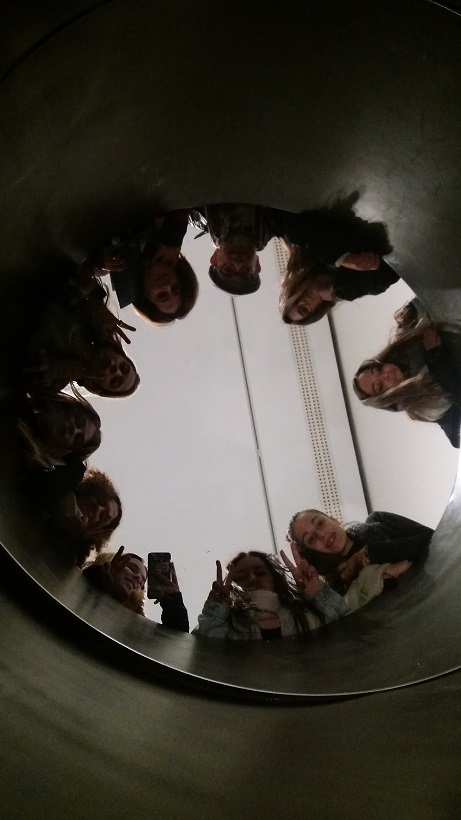|
Hemos estado organizando un viaje a Madrid desde hace 4 años junto con los Departamentos de Historia y de Lengua Española, y debo decir que siempre es interesante si consideramos todas las actividades que hacen los estudiantes y los lugares que visitan. Hemos estado en la capital de España durante 3 días visitando algunos de los museos más importantes, como los museos El Prado y Reina Sofía, donde hemos visto algunas de las pinturas y obras maestras más importantes e interesantes. La mayoría de ellos fueron explicados tanto por profesores como por estudiantes en español e inglés. La mayoría de los estudiantes en el grupo bilingüe de Bachiller2 nos dieron información sobre las mejores pinturas de Velázquez, Goya, Picasso y Rubens. Alyssa, nuestra asistente de idiomas, viajó con nosotros y nos dio información sobre algunas de estas obras maestras. Apolo en la Forja de Vulcano, El Triunfo de Baco, Adoración de los Magos, Meninas, La Fábula de Aracne, Las Tres Gracias, Retrato de la Familia de Carlos IV y Guernica fueron algunas de las pinturas que estudiamos. Comenzamos nuestro día visitando el Museo del Prado y caminando por el casco antiguo. Nos centramos en nuestro recorrido por la arquitectura y el llamado Paseo Literario, en el que nos contaron acerca de los escritores y dramaturgos españoles más importantes. No voy a entrar en muchos detalles sobre Madrid ya que ya hemos mencionado en otros informes, pero agregar el viaje al Palacio de El Escorial en una visita guiada y conocer a Felipe II definitivamente valió la pena. Disfrutamos mucho la visita a la impresionante Biblioteca, la iglesia, los salones privados del Rey y la Reina y la ostentosa cámara funeraria donde fueron enterrados la mayoría de los reyes y reinas españoles. Es un espacio cerrado bien conservado e impresionante donde una gran parte de la Historia de España está "enterrada".
Visitamos el Congreso de los Diputados, la cámara baja del Parlamento de España. Las leyes se proponen en esta cámara y se aprueban o no en la cámara superior o Senado. Personalmente, me impresionaron los agujeros de los disparos contra el techo de la cámara por los conspiradores militares en un intento de golpe de estado. Siempre merece la pena visitar Madrid, por lo que a los estudiantes se les dio un poco de tiempo libre para ver esta ciudad llena de gente, que realmente amaban. Se pasearon por el centro histórico de la ciudad y visitaron algunos de los lugares más populares, como El Retiro y algunos otros jardines y parques populares. Obviamente, fueron de compras, pero esta es una de esas ciudades de las que te enamorarás aunque tengas poco dinero. |
We have been organizing a trip to Madrid for 4 years now together with the History and Spanish Language Departments and I must say it is always interesting if we consider all the activities students make and the places they visit. We have been to the capital of Spain for 3 days visiting some of the most important museums such as El Prado and Reina Sofia Museums where we have seen some of the most important and interesting paintings and masterpieces. Most of them were explained by both teachers and students in Spanish and English. Most of the students in the bilingual group of Bachiller2 gave us some information about the best paintings by Velazquez, Goya, Picasso and Rubens. Alyssa, our language assistant, travelled with us and gave us some information about some of these masterpieces. Apollo in the Forge of Vulcan, The Triumph of Bacchus, Adoration of the Magi, Meninas, The Fable of Aracne, The Three Graces, Portrait of Charles IV’s Family and Guernica were some of the paintings we studied . We began our day visiting The Prado Museum and walking around the old town. We focused on our sightseeing in the architecture and the so called Literary Walk, in which we were told about the most important Spanish writers and playwrights. I won’t get into much details regarding Madrid since we have already mentioned in other reports, but adding the trip to El Escorial Palace on a guided tour and getting to know about Philippe II was definitely worthwhile. We could enjoy visiting the impressive Library, the church, the King and Queen’s private rooms and the breathtaking and ostentatious burial chamber where most Spanish kings and queens were buried. It is a well preserved and breathtaking enclosed space where a huge part of the History of Spain is “buried”.
We visited the Congress of Deputies, the lower house of Spain's Parliament. Laws are proposed in this chamber and they are passed or not in the higher house or Senado. Personally, I was impressed by the holes of the gunshots fired at the ceiling of the chamber by the military conpirators in tcoup d'etat attempt.
Madrid is always worth visiting, so students were given some free time to see this crowded city, which they truly loved. They wandered off around the historical city centre and visited some of the most popular spots such El Retiro and some other popular gardens and parks. Obviously, they went shopping, but this is one of those cities you will fall in love with even though you might be low on money. |
Profesorado acompañante:
D.Francisco Martínez Torres (Profesor de Inglés)
Dña.Virginia Cañaestro García (Profesora de Geografía e Historia)
D.José María Ruiz Garcia (Profesor de Lengua y Literatura)
Dña. Alyssa Pilar Wallace (Asistente de idioma)
Viaje a Madrid 2018
c1.jpg
http://iesalandalus.es/images/noticias/2017_2018/viaje_Madrid/c1.jpg
c2.jpg
http://iesalandalus.es/images/noticias/2017_2018/viaje_Madrid/c2.jpg
c4.jpg
http://iesalandalus.es/images/noticias/2017_2018/viaje_Madrid/c4.jpg
IMG-20171217-WA0002.jpg
http://iesalandalus.es/images/noticias/2017_2018/viaje_Madrid/IMG-20171217-WA0002.jpg
IMG-20171217-WA0003.jpg
http://iesalandalus.es/images/noticias/2017_2018/viaje_Madrid/IMG-20171217-WA0003.jpg
IMG-20171217-WA0053.jpg
http://iesalandalus.es/images/noticias/2017_2018/viaje_Madrid/IMG-20171217-WA0053.jpg
IMG-20171218-WA0017-1.jpg
http://iesalandalus.es/images/noticias/2017_2018/viaje_Madrid/IMG-20171218-WA0017-1.jpg
IMG-20171218-WA0020.jpg
http://iesalandalus.es/images/noticias/2017_2018/viaje_Madrid/IMG-20171218-WA0020.jpg
IMG-20171218-WA0030.jpg
http://iesalandalus.es/images/noticias/2017_2018/viaje_Madrid/IMG-20171218-WA0030.jpg
IMG-20171218-WA0032.jpg
http://iesalandalus.es/images/noticias/2017_2018/viaje_Madrid/IMG-20171218-WA0032.jpg
IMG-20171220-WA0000.jpg
http://iesalandalus.es/images/noticias/2017_2018/viaje_Madrid/IMG-20171220-WA0000.jpg
IMG-20171220-WA0001.jpg
http://iesalandalus.es/images/noticias/2017_2018/viaje_Madrid/IMG-20171220-WA0001.jpg
IMG-20171220-WA0002.jpg
http://iesalandalus.es/images/noticias/2017_2018/viaje_Madrid/IMG-20171220-WA0002.jpg
IMG-20171220-WA0005.jpg
http://iesalandalus.es/images/noticias/2017_2018/viaje_Madrid/IMG-20171220-WA0005.jpg
IMG-20171220-WA0006.jpg
http://iesalandalus.es/images/noticias/2017_2018/viaje_Madrid/IMG-20171220-WA0006.jpg
IMG-20171220-WA0008.jpg
http://iesalandalus.es/images/noticias/2017_2018/viaje_Madrid/IMG-20171220-WA0008.jpg
IMG_0067.JPG
http://iesalandalus.es/images/noticias/2017_2018/viaje_Madrid/IMG_0067.JPG
IMG_0068.JPG
http://iesalandalus.es/images/noticias/2017_2018/viaje_Madrid/IMG_0068.JPG
IMG_0069.JPG
http://iesalandalus.es/images/noticias/2017_2018/viaje_Madrid/IMG_0069.JPG
IMG_0071.JPG
http://iesalandalus.es/images/noticias/2017_2018/viaje_Madrid/IMG_0071.JPG
IMG_0077.JPG
http://iesalandalus.es/images/noticias/2017_2018/viaje_Madrid/IMG_0077.JPG
IMG_0078.JPG
http://iesalandalus.es/images/noticias/2017_2018/viaje_Madrid/IMG_0078.JPG
IMG_0079.JPG
http://iesalandalus.es/images/noticias/2017_2018/viaje_Madrid/IMG_0079.JPG
IMG_20171217_095413_065.jpg
http://iesalandalus.es/images/noticias/2017_2018/viaje_Madrid/IMG_20171217_095413_065.jpg
IMG_20171218_130525_882.jpg
http://iesalandalus.es/images/noticias/2017_2018/viaje_Madrid/IMG_20171218_130525_882.jpg
c5.jpg
http://iesalandalus.es/images/noticias/2017_2018/viaje_Madrid/c5.jpg
